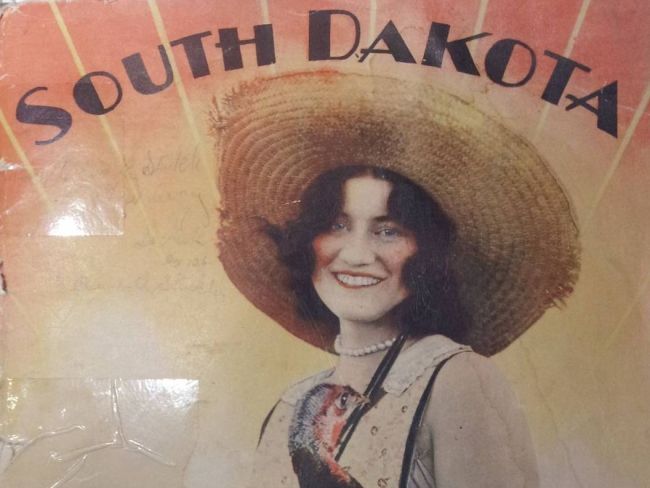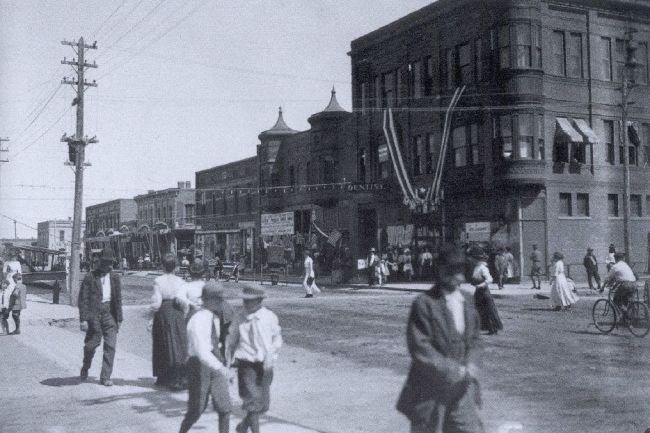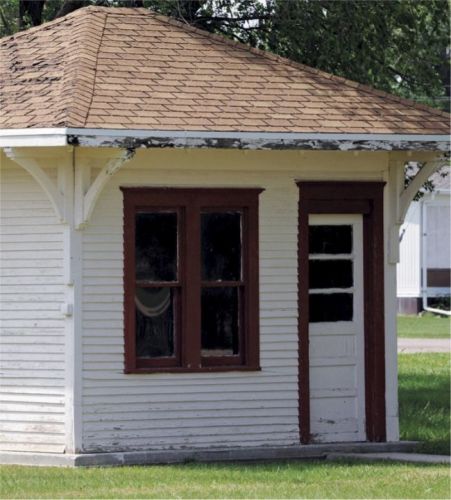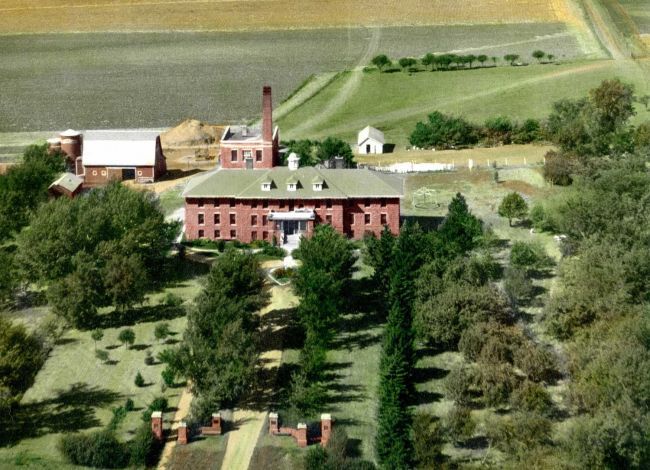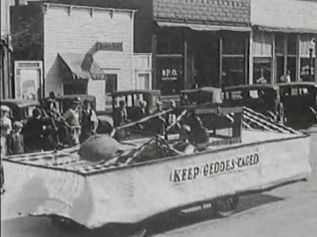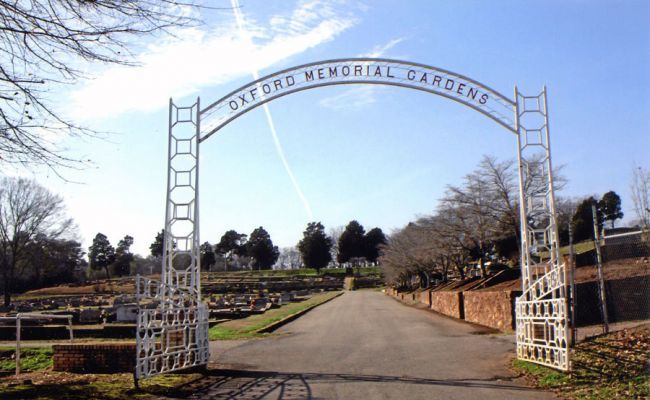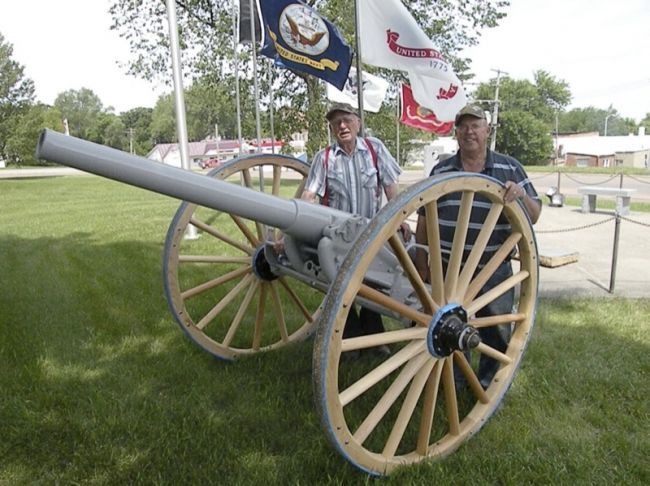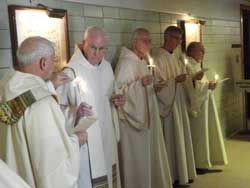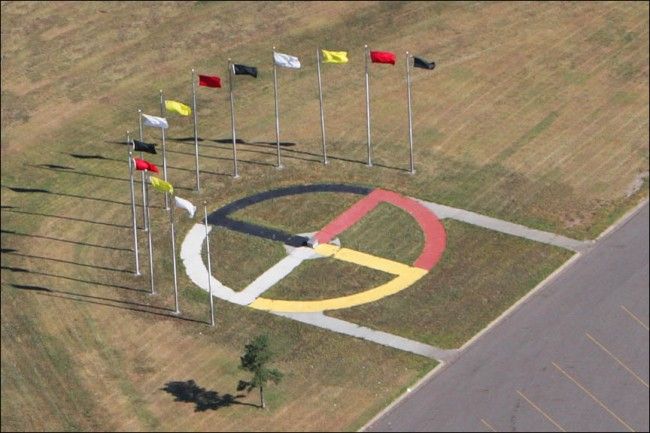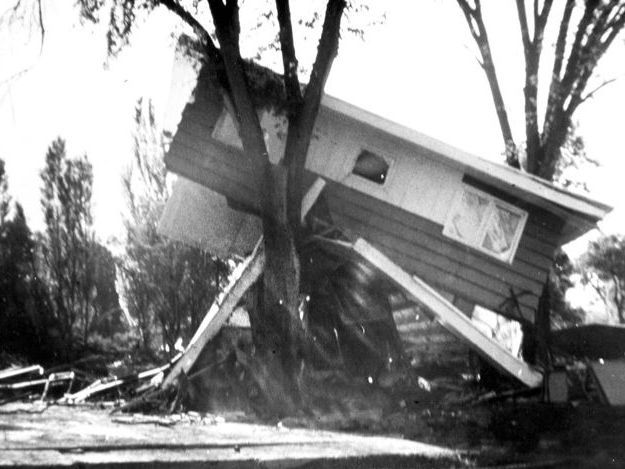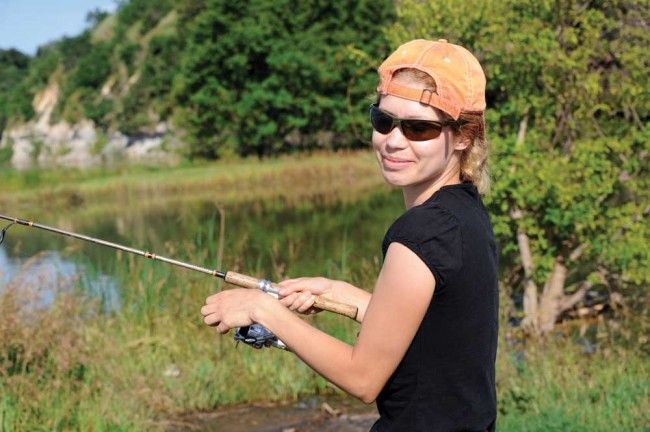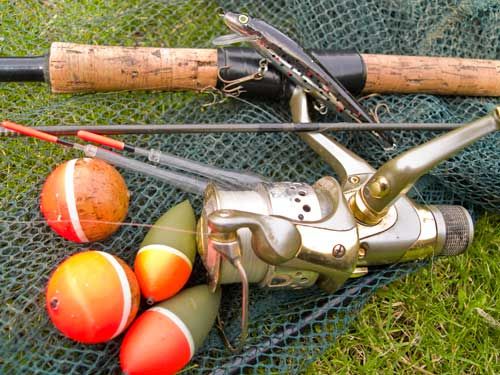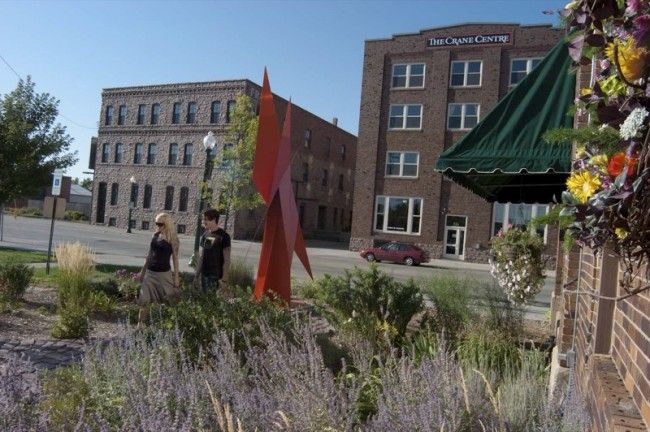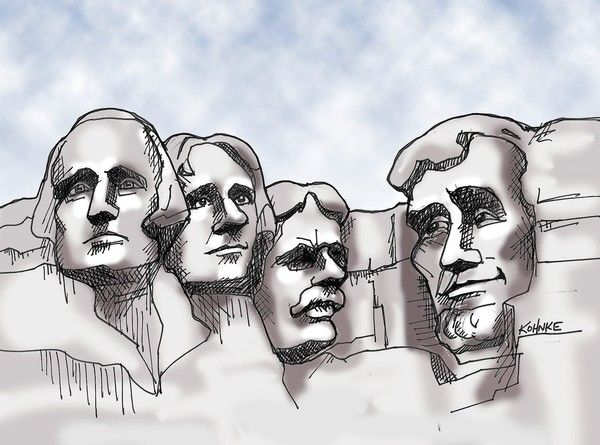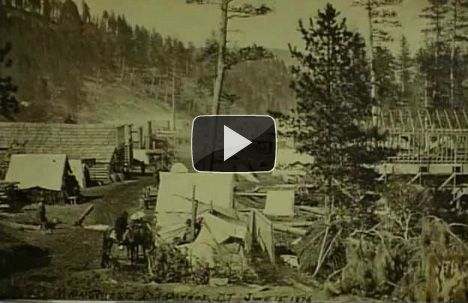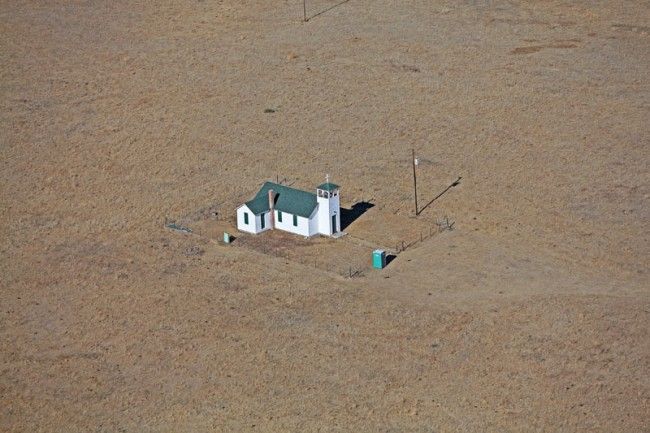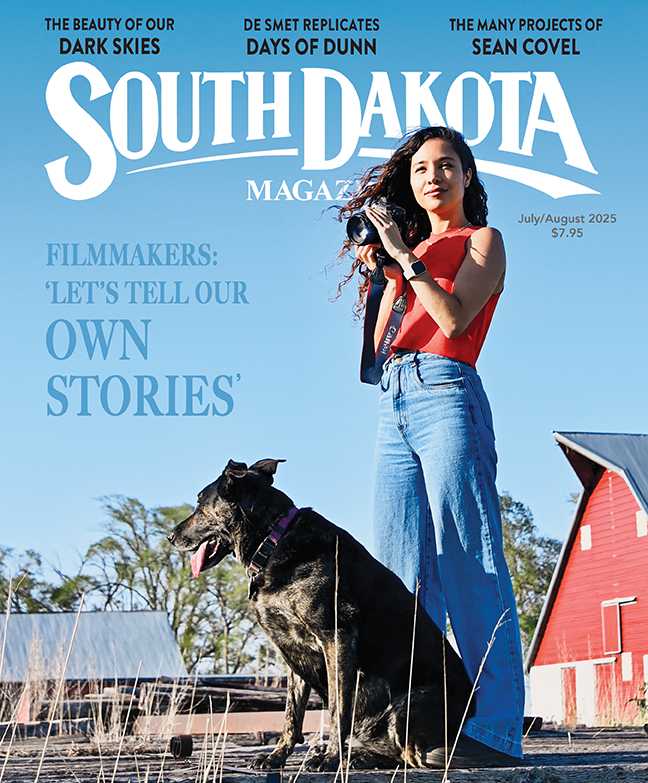
Editor's Notebook
Join our Editor-at-large and founder, Bernie Hunhoff, as he offers stories, quips & travel tips gathered as he roams South Dakota. Other magazine staffers may contribute here or there as well. Enjoy the South Dakota miscellanea.
We Weren't First?
August 22, 2012
We started publishing this magazine before several of our staff members went to school, so it's getting old — especially by South Dakota publishing standards.
Lots of magazines have come and gone. The earliest we've tracked was started by the legendary historian Doane Robinson right here in Yankton in 1898. He called it the Monthly South Dakotan. It lasted for eight years.
We have single copies of many other attempts. There was a Dacotah Magazine that began in Watertown shortly after Robinson's Monthly failed. The state Chamber of Commerce tried a Sunshine Magazine in the 1920s.
Another startup failed shortly before we started in 1985. As I recall, the advertising sales director went to prison on a murder charge.
South Dakota isn't the easist place to publish a magazine, but it has been fertile ground for us. Our advertising directors have stayed out of jail and our writers and photographers have shown great passion for the art of publishing a prairie and mountain magazine.
We are constantly on the lookout for other publishing brethren who may have preceded us, and today a reader sent us this image of a front cover of a publication. My guess is that it is a state agriculture department yearbook from the 1920s, but we would welcome any further input.
We would also be interested in identifying the pretty young model on the cover. Any leads?
Fantle's: The Big Store
August 14, 2012
Everybody loves America's sweet downtowns. We love them in a Norman Rockwell way. They remind us that we once had the time and inclination to don a hat and jacket and stroll around, store to store, visiting neighbors and meeting newcomers.
Some of South Dakota's downtowns are in a revival stage. Mobridge, pop. 3,500 or so, has an amazing Main Street, complete with a movie theater, clothing stores, a top-notch eatery painted purple, an excellent library and other amenities. Rapid City's downtown was once considered off-limits to families after 5 p.m., but now it echoes with the laughter of children thanks to a visionary Main Street Square that attracts families and more than a dozen new shops that feature toys, outdoor gear, local foods, Native American art and even an English pub with appropriately-attired waitresses.
So downtowns aren't dead in South Dakota. And the funny thing is that the come-back cities are doing what the Fantle/Levinger family did a century ago. They make shopping fun.
The Fantle family came to Yankton in 1893 and opened what was then called "The Big Store." They suffered fires and setbacks, but they persevered well into the Wal-mart age because they loved their community and it showed.
In the 1930s, when nobody had any money, they served a two-cent lunch so nobody went hungry. They also featured 97-cent women's frocks.
They held Watermelon Days every summer. One year, they served 2,780 melons so Harold Levinger (who married a Fantle) figured 27,800 people showed up because he got 10 slices to the melon. I don't think he accounted for the kids who ate three or four slices each, but 27,800 sounded great at the Chamber of Commerce.
The Levingers and Fantles had a cafeteria, a stylish beauty salon, a big children's store and the first elevator to carry people between Sioux City and Sioux Falls.
And they had a monkey. Everybody remembers the monkey. Every farm kid who came to Yankton wanted to stop by Fantle's to pet the monkey.
Here's another thing the Fantles and Levingers did: every time their city needed something, they were among the first to put up cash. Other families were equally supportive — certainly the Danforths, who owned the bank and a lot of downtown property, and of course the Gurneys who had the nursery. The Danforths, Fantles and Gurneys each put up $25,000 cash in 1921 to construct the Meridian Bridge because local leaders had grown tired of waiting for the state of South Dakota to build one. That same bridge is the city's newest tourist attraction today, because it has been transformed into a pedestrian/biking trail.
After WWII, the Fantles gave 40 acres on the north edge of the city for a park. They did list some caveats. It had to have a pool for children, and it had to include a memorial to the soldiers who died in war. The park is a beloved place to Yanktonians today.
Many smaller retailers in the city also were generous with their time and money. And the employees of today's chain retailers and box stores that have followed — some might say supplanted — the Fantles and the smaller mom-and-pop stores — surely try to contribute. Some have become important civic leaders.
But a town needs the likes of the Fantles, Levingers, Danforths and Gurneys to really grow. That's as true today as it was in 1893. Rapid City and Mobridge have them. So does every other town in South Dakota.
45,000 THANKS
August 7, 2012
We love every one of our readers. The dozen of us (or so) who get to produce and publish South Dakota Magazine are ever grateful for the readers who really make our explorations possible.
And the magazine has steadily gained readers throughout our 27-year history. Today we hit a new milestone — 45,000 paid subscribers!
The magazine industry and our very own surveys indicate that about 4 people read each residential subscription, so the 45,000 subscribers translate to about 180,000 readers.
We never imagined that amout of readership when we published the first issue in the spring of 1985. And for that matter, when we hit 25,000 ... 30,000 ... 35,000 ... 40,000 .... we never imagined 45,000.
It's a credit to our fine staff, the best that any publisher could ask for. And credit largely goes to our big and beautiful state. It's not hard to find adventurous, exciting, heartfelt and heroic stories of life in South Dakota.
At midday today, our circulation chief Jana Lane entered the 45,000th subscriber. She is Joyce Gerberding of Goodwin, and she will get the magazine as a gift from Judy Kranz of Watertown.
When we started the magazine in 1985 we badly needed 200 subscribers so we could qualify for a second class USPS permit, so we knocked on doors and begged for checks from friends and relatives. Every subscription was a step toward our dream of showing South Dakota on paper with stories and photos.
One of the interesting things about still publishing the magazine 27 years later is that our 45,000th subscription is as rewarding as the first 200. Readers make the magazine what it is today. So thanks, Judy. We hope Joyce enjoys the magazine as much as we appreciate the opportunity to practice journalism in South Dakota.
Winner! Whereizzit in South Dakota?
Think you know where this historic building is located? Leave a comment with your guess. On August 1, we will randomly select a winner from the correct guesses. The winner receives a collection of South Dakota Magazine products.
We Have a Winner!
We have a winner in our July Whereizzit contest! We drew Colleen Schulte's name from the pool of people who knew that this structure can be spotted in Geddes, South Dakota. In former days, it was a WNAX gas station, but now it's part of Geddes' historic village.
Thanks for your guesses, everyone!
Mystery Photo No More
July 24, 2012
Update — the mystery has been solved!
Lots of you guessed that this was the Odd Fellows Home in Dell Rapids. We just spoke with Joan Rasmusson, owner of the former orphanage and nursing home, who verified it for us. She's in the midst of renovating the beautiful, historic structure. The old laundry equipment area has been converted into condos, and more improvements are planned. Not many of the structures pictured lasted throughout the years, but Joan mentioned that the apple orchard is still there.
Joan's no stranger to the renovation process. She was involved with restoring the Grand Opera House, a gorgeous 1888 theater in the Romanesque Revival style that is hosting plays, concerts and other events once again. She informed us that other Dell Rapids structures are being fixed up. That's exciting news for the northern Minnehaha County gem.
We recently unearthed a photographic mystery here at South Dakota Magazine. Back in 2001, Pat and Rose Mary Trask of Wasta, South Dakota sent us this picture, along with a plea for help:
Our community service club, (WTL for "Willing to Learn" — not "Women Tell Lies" — Club) was painting and cleaning our Elm Springs Community Hall when we found the enclosed historic photo. None of us knew what building this was so we hope you can help us identify it.
We didn't recognize this scene then and we don't now. Do you? The back of the photo is blank, but "Don Hoskins / Huron" is printed in white on the front. That's the only clue we can offer.
A Cool Collection
July 6, 2012
Scenes from Platte's past are now available for online viewing, thanks to the South Dakota State Historical Society. They partnered with the National Film Preservation Foundation to preserve and share short silent films by Lawrence H. Cool, a Platte resident in the 1930s. The snippets of Charles Mix County activity include a visit from Governor William J. Bulow, the construction of the Lake Platte spillway and a parade through town. (If the float banners are to believed, Geddes was in big trouble.)
View these slices of life at the South Dakota Digital Archives.
Discovered: A Missing Governor
June 26, 2012
Governors come and go. We don't pay a lot of attention to them when they're gone, and that's especially true of John Pennington, the fifth governor of Dakota Territory.
But he deserves better treatment.
Pennington wasn't perfect, but he should be judged and remembered in the perspective of his era.
He was an Alabama newspaperman during the Civil War. When he realized that it wasn't going to end well for his beloved South, he began to suggest editorially that perhaps peace wouldn't be a bad thing. That infuriated many of his readers. I've heard second-hand that even some of his own descendants are still embarrassed by his writings.
But Ulysses S. Grant liked the editorials, and he rewarded Pennington in 1874 by appointing him Governor of Dakota Territory. The 45-year-old journalist arrived in the young riverside capital city of Yankton, anxious to help create a new civilization on the prairie. Those were exciting times. Railroads were developing at break-neck speeds. Gold was waiting to be mined in the Black Hills. Homesteaders were flocking to the countryside and new towns were springing up everywhere.
Unfortunately, a "Yankton Gang" was already entrenched in the city and Pennington became part of their shenanigans. For example, Pennington County was created — named after the new governor — and Yankton officials were appointed to the county offices under the theory that the Black Hills crowd was still too raw to run a fair election. Some of the county officials didn't even travel West ot serve; they just named deputies to do the work.
But Pennington loved Dakota. In fact, he argued against dividing it into two states. He tried to create some fairness for the Native Americans, argued on behalf of farmers in fights against the railroads and initiated an aggressive anti-grasshopper program (if you think that sounds silly, think how popular it is to fight pine beetles today.)
And he loved Yankton. He built a modest mansion at 3rd & Pearl (now the home of South Dakota Magazine for the past 27 years) and several other houses and structures. He was reappointed governor in 1876 — a rare occurrence because most governors quickly grew unpopular — and after leaving the post in 1878 he continued to live in the city, even resuming his journalism career in 1885 with a weekly newspaper. His wife died in Yankton, and Pennington eventually returned to Alabama as an old man.
That was the end of the story as we knew it until this month when Gary Conradi, a retired Sioux Falls businessman and avid historian, stopped by our offices. Conradi is collecting information and photographs on all of Dakota's governors. All of the territorial governors (and many of the state's early governors) are buried out-of-state.
Conradi searched long and hard for Pennington's grave, and finally discovered it in Oxford, Alabama, a town very near to Anniston. He couldn't find anyone who would admit to being Pennington's relative but he did bring back pictures of the modest gravesite. There is no mention or marking of his service to Dakota Territory or South Dakota.
Pennington County old-timers are probably pleased about that.
Jerauld County's Big Gun
June 22, 2012
No one knows why or when Wessington Springs’ cannon arrived in South Dakota from its birthplace at the Watervalet Arsenal in New York, or if it ever saw action in wartime. But over the years, the 114-year-old weapon has become an important symbol of military service by Jerauld County veterans. Recently, the Wessington Springs True Dakotan announced that residents had restored the cannon to its original glory, using local time and talent.
“The American Legion talked Brian Van Buren of Wessington Springs into doing the metal restoration that included disassembly, sand blasting, cleaning, painting and reassembly. Hub Kieser’s -81 Enterprises, on the north side of Wessington Springs, offered their facility for the restoration project. Fred Knight donated sand, Jason Weber donated the use of a sand blaster, South Dakota Wheat Growers provided an appropriate air compressor,” wrote the True Dakotan. They hired expert wheelwrights Hansen Wheel and Wagon of Letcher to built new wheels. The total cost of restoration was about $5,000.
The 829 lb. weapon now stands guard in front of the Jerauld County Courthouse as part of the Wessington Springs Veterans Memorial, where it will honor South Dakota veterans for many years to come.
All Good Things Must End
June 15, 2012
South Dakota's rural solitude is church-like to many of us. I don't know how many farmers and ranchers have told me through the years that they've felt closer to God on the land than in a pew.
When cowboy troubadour Kyle Evans sang "I'm in Heaven on a horse on the wide open prairies of Dakota ..." he spoke for everybody who has ever chewed on a blade of blue stem.
But as church-like as the prairie might be, it seemed even holier at Blue Cloud Abbey in Grant County — a picturesque little monastery that grew into a popular retreat center for all sorts of people, including South Dakota's reflective writer Kathleen Norris.
The true story of how the monks came to locate near Milbank is as sweet as the prairie grass. The priests and monks at St. Meinrad Abbey in Indiana wanted to establish a new monastery in the Dakotas so they sent four brothers to scout the area in 1949. They liked a spot above the Missouri and James Rivers near Yankton, but WNAX's tall radio towers obstructed the view so they decided to drive to Fargo, North Dakota.
On the way (this was before I-29 was built) they stopped outside the tiny town of Marvin and saw a rolling, wooded string of hills above Grant County's Whetstone Valley. The land was rocky but they liked it so they went to nearby Milbank to inquire. They were directed to the Milbank banker, who told them that they land had just been listed for sale within the last 30 minutes. He offered them 300 acres at $22 an acre.
Their good timing and the banker's name were signs they couldn't ignore, so the Benedictine monks immediately inked the deal. The banker's name? Effner Benedict.
There were 40 founding members, but their numbers have now dwindled to a dozen and three are over 90. "What else can we do?" asked Abbot Denis Quinkert, as he solemnly spoke of the monastery's plan to close the doors.
Abbot Denis hopes a religious group will take over the monastery, but no one knows what will happen to the beautiful facility. The only thing we know for certain is that the same spiritual quality that was discovered by the Indiana monks 63 years ago — a spirituality that is very familiar to all who love the land in South Dakota — will be there to await the next tenants.
Winner! Whereizzit in South Dakota?
Do you recognize this spot? If you think you know the location, leave a comment below with your guess.
On June 1, we will randomly select a winner from the correct answers. The winner will receive a collection of South Dakota Magazine products and a 16"x20" print of his/her choice from photographer Dave Tunge of Dakota Aerials.
WE HAVE A WINNER!
A lot of you recognized this spot — it's the Spirit of the Circle monument located near Big Bend Dam and Fort Thompson. Sadly, there can only be one winner, so we drew a name at random from the correct answers. Rick Crocker was the lucky one chosen. Congratulations, Rick!
Thanks for playing, everyone. Watch for our next Whereizzit contest in the July/August issue of South Dakota Magazine.
Remembering the Flood
June 4, 2012
Unanswerable cries for help, narrow escapes and the raging, ice-cold waters of Rapid Creek sweeping away everything in its path — no one who lived in Rapid City in 1972 will ever forget the horrors of June 9, when 238 people lost their lives in South Dakota’s greatest natural tragedy. On the 40th anniversary of the flood, Rapid Citians are remembering the disaster with theater performances, a pow wow, art exhibits, photos and, most importantly, stories. We featured some of those stories in our May/June issue, but former Rapid City mayor Don Barnett had more to share in a recent interview with South Dakota Magazine publisher Bernie Hunhoff and Grant Peterson of Brookings Radio. Click below to hear their three-part conversation.
Grant and Don Barnett continued their conversation on May 22, 2012. Rapid Citians Dean Reichart and Larry Lytle joined in to share their memories of the flood.
King of the Prairie Waters
May 18, 2012
Noted historian George Kingsbury lumped farm immigration, gold discoveries and — yes, believe it or not — catfish as three important factors to the settlement of Dakota.
In his book History of Dakota Territory (Vol. 1, p. 165), Kingsbury wrote, "in the opinion of many of the early settlers the food problem would have been a very serious one had it not been for the abundant supply of this best of all fishes right at the threshhold of the settlements."
Kingsbury noted that catfish was somewhat out of favor at the time he wrote the book (about 1915). "It is occassionally remarked in these later times that the people of Dakota are not acquainted with the edible merits of this excellent fish, but send to eastern and western markets for an inferior article, while they have such an inexhaustible supply here at home."
Immigrants to South Dakota make the same discovery today, according to a story in our May/June 2012 issue in which we feature Ukraine-born Nata Jones, who came to Yankton and enthusiastically took to catching and grilling Missouri River catfish.
Nata married a local fellow and instantly appreciated the smalltown atmosphere in Yankton. She hailed from Chernivtsi, a city of 240,000. "Everybody is so friendly and smiling. You don't need to worry about nothing," she told us in a delightful Euroopean accent. "If something happened, everybody would help me."
And the catfish? "I fished in the Ukraine, too, but this is a little bit different here." She and her husband, Brad, use stink bait to lure the whiskered bottom feeders so famous for their ability to smell.
South Dakota has Blue Catfish, Channel Cats and Flatheads. All can grow to immense proportions, but today's intensive fishing — and perhaps the damming of the Missouri — might be resulting in fewer giant cats. The record Blue was a 97-pounder caught in 1959 and the biggest Channel was a 55-pounder caught way back in 1949.
However, Davin Holland of Tabor caught the state record Flathead (63.5 lbs.) just six years ago in the James River near Yankton. Cats are found in rivers, lakes and ponds across our state.
"For scores of years, the early traders subsisted almost exclusively on a diet of buffalo and catfish," wrote Kingsbury a century ago.
Throw in a few tomatoes, morel mushrooms and wild asparagus and it doesn't sound like a bad way to eat in South Dakota.
Can Fishermen Be Trusted?
April 25, 2012
I stopped at Gramp's, a favorite hangout for hunters and fishermen in Yankton. It's a convenience store with homemade soup, real black coffee, sinful cookies and Dimock cheese.
I was on a second cup of coffee when Larry, the proprietor's husband, came by to ask about some new law or rule from Game, Fish and Parks that says he can no longer net minnows for bait in the Missouri River.
GF&P is notoriously powerful in South Dakota, but any new rules must be approved by the legislature's Rules Committee so I contacted two buddies on the committee. Yes, they said, there is such a rule. Nobody opposed its adoption so it sailed through.
Soon after my inquiry, some of the top brass at GF&P emailed me to explain the department's position. News travels quickly in South Dakota. Naturally, it has to do with the spread of Asian Carp. Gavins Point Dam in Yankton is the last defense against this dreaded species' emergence into the Upper Missouri. The carp are a big menace to boaters and anglers downriver, and GF&P will go to any lengths to keep them out of Lewis and Clark Lake and the other lakes to the north.
The worry is that fishermen will seine minnows in the Missouri, the Big Sioux or the James and then use the same minnow bucket as they travel northward up the Missouri. They might eventually dump the minnows in a reservoir and, voila, the Asian Carp will have arrived.
Thus the new rule. But of course the new rule, to be effective, will require education. Families have been netting minnows for bait in this Dakota Country long before GF&P existed. It is a tradition, a time-honored practice that seemed ecologically friendly for generations.
To stop people from doing so will take time. Wouldn't it be just as easy to demand that anyone who nets minnows must release those minnows the same day in the same spot?
Nobody is on the side of the Asian Carp, but rules have to be realistic and sensible. Let's have a discussion — is there a better way for GF&P to proceed?
The Cadillac Caper
April 4, 2012
We had a good laugh after reading a story in the March 27 edition of the Wessington Springs True Dakotan. They learned about the incident in the Plankinton South Dakota Mail, and now we’re retelling the tale to you.
It’s said that criminals often return to the scene of their crime. That was true on March 9th, when the Aurora County Courthouse in Plankinton was the scene of a brazen daytime theft. Larry Unruh had parked his red Cadillac out front while he took care of some official business inside. When he left the building, the Cadillac had disappeared.
Luckily, Deputy Preston Crissey was on the scene. He sprang into action, running upstairs to the Sheriff’s Office to issue a stolen car bulletin and alert the Highway Patrol, then back out to patrol the streets of Plankinton and track down the culprit.
Mr. Unruh headed up to the Sheriff’s Office to make a report of his own. When questioned by Sheriff David Fink, Unruh reported that the vehicle was full of gas and his girlfriend’s purse was inside, full of money.
“While the investigation continued, Sheriff Fink looked out the courthouse window to the north and surprisingly saw a vehicle fitting that description traveling east very slowly on Fifth Street,” read the South Dakota Mail report.
Unruh looked out the window. Yes, it was the missing Cadillac…and it was pulling back in to the courthouse parking lot. The two men went into the Clerk of Courts office to get a better view from their window.
Two figures got out of the pilfered Caddy. The getaway driver was a young high school girl. Her passenger was a man with a clipboard — driver’s license examiner Dale Steffen.
“According to Sheriff Fink, the young girl’s parents dropped her off for her driver’s test and drove away. Not knowing this, Mr. Steffen believed that was the family’s vehicle, while the nervous young driver assumed it was the test vehicle.”
“Mr. Unruh told Sheriff Fink, ‘I’m not pressing charges!’” said the Mail.
We hope that the teasing has died down in Plankinton for all parties involved. Thanks to the South Dakota Mail and the Wessington Springs True Dakotan for sharing the story.
A Sioux Falls Bias?
March 30, 2012
Do rural South Dakotans have an “us agin’ them” attitude about Sioux Falls? Or does paranoia plague people in cities large and small?
The issue arose last weekend when the Sioux Falls Argus Leader published a lengthy article related to negative reactions from the South Dakota High School Activities Association about moving more state tournaments to the soon-to-be-built events center in Sioux Falls. The paper’s editorial began like this:
We’re still in an us vs. them mode in South Dakota. Sioux Falls vs. everyone else. East of the river vs. west. Big vs. little. City vs. country. Perceived winners vs. losers. Reminders of this pop up in some unusual places sometimes, and it is hard not to wonder whether those attitudes hold us back from our potential as a state.
The Argus raises a legitimate question. And if the editors feel that way, then I’m glad they expressed themselves.
But we just don’t see a Sioux Falls bias in our extensive travels from border to border. And that’s because Sioux Falls leaders and citizens haven’t been pushy. They haven’t been bullies or braggarts.
The Sioux Falls metro area now has about 230,000 people, nearly 30% of South Dakota’s total population. But the city hasn’t pushed its weight around either the state or the region. Like a wealthy and kindly uncle, it’s just nice to have around. It hasn’t overwhelmed the state politically or commercially.
Usually the metro citizenry votes much the same as the rural population. Sioux Falls lawmakers are gaining strength in the state capitol due to the city’s growth, but they haven’t visibly formed any sort of metro caucus, formally or informally. And many if not most of them have roots in smaller towns and cities.
Sioux Falls has an excellent education system, but the city also hasn’t dominated in that department because the two biggest public universities are an hour’s drive north and south.
Culturally, the city isn’t the epicenter of prairie life, either. It has too much concrete, too many lights, too much neon. South Dakota’s culture is rooted in the bawdy Black Hills, the displaced Lakota and Dakota Indians, the struggling farmer and rancher and the dwindling small towns. We write poems and songs about adversity and hard times. Sioux Falls doesn’t seem to inspire those popular South Dakota themes.
Economically, Sioux Falls is crucial to South Dakota. It has become the city of opportunity for thousands of young people who couldn’t find a good job in the small towns were they were born and raised. Their parents are glad they didn’t have to go further from home to be successful. But again, Sioux Falls doesn’t rule the state. We don’t all cash checks at branches of Sioux Falls banks. We don’t all eat at restaurants created and based in Sioux Falls. From a business standpoint, the city is important and supportive but not all-powerful.
Sioux Falls has a colorful history, but it lacks the characters that forever will link Yankton and Deadwood and Fort Pierre with the Old West. Sioux Falls didn’t build its reputation on shootings and hangings. In the early years, its leaders tended to business and grew a city on the prairie.
Claiming bias is an easy excuse for not getting your way on any particular issue. Democrats and Libertarians seldom get their way. Conservationists and sportsmen sometimes feel ignored. Farmers believe they are overtaxed and underappreciated. Women didn’t even get to vote until 1918, and our Native American neighbors don’t always feel like they get a fair shake.
There are pros and cons to playing all our basketball tournaments in one city. The debate shouldn’t be short-circuited by a “nobody likes me” excuse because l) it’s not true and 2) even if it was true, it wouldn’t be very effective in our rugged, fight-for-yourself culture.
Black Elk Was Right
March 23, 2012
Humbly Fourth in the USA
March 16, 2012
South Dakota Magazine and the Chicago Tribune have almost nothing in common. The Tribune is owned by billionaire Sam Zell. It was in bankruptcy a few years ago. It is the eighth largest newspaper in the USA. The Trib once owned the Chicago Cubs but not any longer.
South Dakota Magazine is owned by a thousandaire. We aren't rich but neither are we in bankruptcy. We are the largest magazine in South Dakota. Several of our staffers are Cubs fans.
And here's another difference. Public Policy Polling recently published a poll that shows how Americans like or dislike the 50 states. The best-liked states in order are Hawaii, Colorado, Tennessee and, naturally, South Dakota. Sadly, Illinois ranked 47th.
So the Chicago Tribune editors cranked up their poison press and trashed South Dakota. They concluded, "With no ill will to South Dakota, we have to ask. Seriously?"
The Chicago editors said they could understand Hawaii's high ranking because of its beaches. They appreciated Colorado because of its mountains. And even Tennessee, they granted, had a music culture. But South Dakota? "Seriously?"
Obviously, they've never been to South Dakota — Land of about 5,000 natural lakes and some of the most amazing and diverse rivers and reservoirs in the world. And we've got mountains, we just humbly call them "the Hills." As for music, I've seen and heard quite a few of those Nashville folks here in the state. One of our state's greatest singer/songwriters was Kyle Evans, a Wessington Springs cowboy who spent some time in Nashville but was too homesick to stay. When he got home he wrote a song that goes like this:
I'm in heaven on a horse on the
Wild open prairies of Dakota
Where life sings me a melody and
My heart sings in harmony
My troubles never been so few before.
Yes, we've got a pretty amazing country music community of our own. The Poker Alice Band is my personal favorite. Tomorrow night I'm going to Mac's Pub in Volin to hear Mike McDonald sing some ballads. Mike is a retired South Dakota postmaster and an amazing singer. A few years ago, the Old Courthouse Museum in Sioux Falls brought an Irish band to South Dakota for St. Paddy's Day and they asked Mike to do the warm-up. He sang his Irish heart out and the crowd went wild. I think many of them thought he was the main act. I never felt so sorry for anyone as I did for the poor Irishmen who had to follow Mike that night. Unlike beaches and mountains, good music is everywhere. Some great musicians just don't have agents.
So unlike the Chicagoans, we're not shocked that South Dakota ranked fourth. Americans are smart people. I'm a little surprised that Illinois ranked 47th because I don't see anything wrong with the Land of Lincoln. Certainly the Cubs have taught the state some humility. And, hey, not everybody can be fourth.
Jim Hagen, South Dakota's Secretary of Tourism, also took umbrage with the Chicago Tribune editorial and sent the newspaper a properly humble but corrective letter that you might also find interesting.
See you at the beach. Or the Hills. Or at Mac's.
Recapturing Custer's Trail [Video]
March 7, 2012
We are big fans of Black Hills photographer Paul Horsted. That's why we were so thrilled to see Fox 7 News in Rapid City do a three-part series on his re-photographing projects, where he captures a South Dakota scene or landscape based on a historical photo.
Lt. Col. George Armstrong Custer's 1874 Expedition passed within a mile of Horsted's house. That closeness to history led Horsted and writer Ernest Grafe to retrace the Expedition's Black Hills footsteps in their 2002 book Exploring with Custer. The two teamed up again along with historian Jon Nelson on a companion volume called Crossing the Plains with Custer, which follows the entire Expedition route from Fort Lincoln.
When we featured the books in our Sept/Oct 2009 issue, Horsted told us "I'm really excited by anything that connects us to history in a more direct way." That includes photographing the same scenes the Expedition's photographer captured 138 years ago and finding cartridges, buttons and horseshoes soldiers left behind.
PART 1:
PART 2:
PART 3:
For more information on Paul or to order books, visit Dakota Photographic.
Winner! Whereizzit in South Dakota?
February 22, 2012
How well do you know your rural South Dakota churches?
If you think you know where this one is located, leave a comment below with your guess. We're looking for the town closest to the church. (No fair asking the photographer, Dave Tunge of Dakota Aerials!)
On April 2, we will randomly select a winner from the correct answers. The winner will receive a collection of South Dakota Magazine products and a 16"x20" print of his/her choice from www.dakotaaerials.com.
We have a winner!
The winner of our March Whereizzit contest, drawn at random from the correct answers, is Shirley Langdeau Dick. Shirley knew the Holy Name Episcopal Church well, since she was baptized and confirmed there.
Should you want to see it for yourself, the Holy Name Episcopal Church is located southeast of Fort Pierre off of Highway 1806 in the Fort George community on the Lower Brule Reservation.
Thanks for playing, everyone!
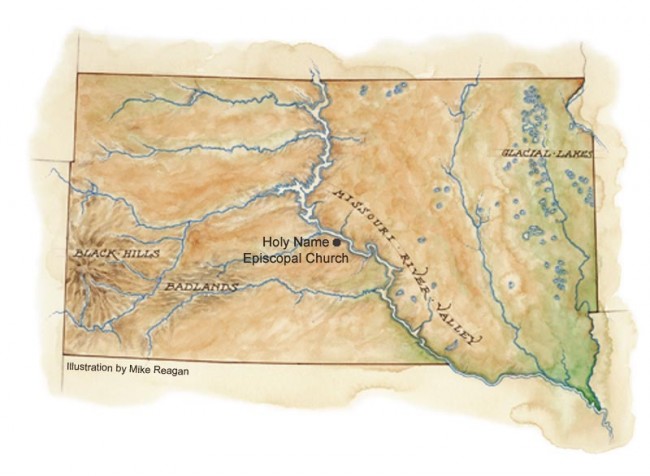 |
The Next Ethanol
February 20, 2012
News came last week that the 2011 corn crop in South Dakota was worth about $4 billion. That's not chump change. The state's total GDP is only about $40 billion.
The $4 billion represents a 33% increase over the prior year, and farmers weren't complaining in 2010.
There's plenty of credit to go around. Mother Nature gets most of it, but our farmers' ability to adapt to new seeds, technologies and tillage practices are also impressive.
Then there's ethanol. Remember the time when cattle and hogs ate most of the corn crop? Those were the days when corn too often sold for less than $2 a bushel. Now, much of the crop is delivered to ethanol plants; after the starches are removed, the by-product is sold as livestock feed.
Environmentalists, old-oil advocates, corn farmers and others can argue till doomsday about the efficiencies of ethanol, but there's no doubting that it has been liquid gold for South Dakota.
Industry experts always said ethanol would be a bridge to a better bio-fuel, and the second generation is about to arrive in Redfield where a farmer-owned ethanol plant is being retroffitted for a new product called bio-butanol.
The plant manager came to Pierre last week, pitching a bill that will expand the state's ethanol incentives to include bio-butanol. He said it has a four-molecule composition that gives it a much broader commercial use in product manufacturing and foods. It can also be blended with diesel and aviation fuels, and the by-product has a longer shelf life as livestock feed.
It will be interesting to hear what Exxon Mobil has to say.

